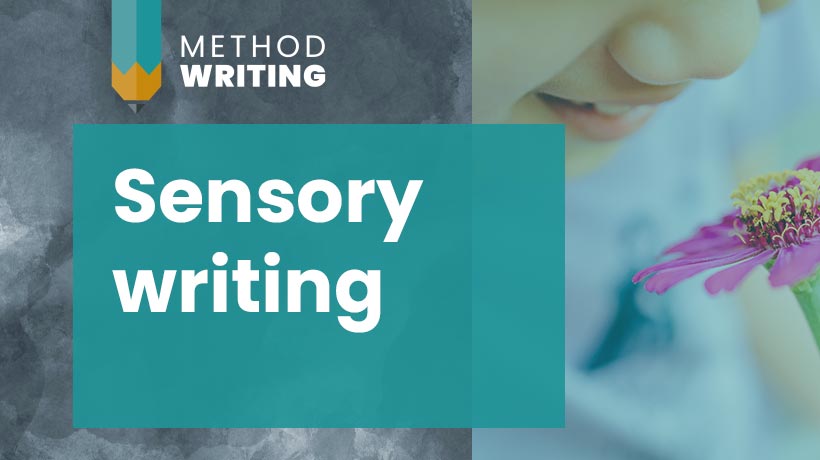Sensory writing 1 – touch and texture
Sensory writing is a great way to bring your readers close, whatever your writing form – fiction, poetry, scripts or copywriting. Find out how to use the senses of touch and texture to allow readers to experience your created worlds more deeply.
The other senses – including smell, sounds – are powerful, but touch and texture are unique. They can reach beyond the page and screen and create a strong tactile connection to the reader. Touch and texture are felt on our skin – how close is that?!
Touch and texture words can help the words to disappear, plunging the reader into a more vivid experience that makes them shiver, sweat and savour as if they were really immersed.
And that’s a tremendously powerful tool when you’re writing fiction.
Writing words to reach through the screen
Immersive, sensory words are especially important for web writing, where readers experience bigger barriers to engagement.
If you’re a copywriter writing about a beautiful pullover or textile, for example, how can you get across its expensive, luxurious feel?
Visual images help to tell the story, but how can people reach through the screen and touch that fabric, know whether it’s expensively heavy, thin and clingy, or richly textured?
Or say they’re looking for an elegant standard lamp for their home. How can they tell whether it’s solid and weighty, or likely to keel over in a puff of wind? Factual “telling” – it’s costly brocade, it’s heavy silver – is too functional and prosaic. It doesn’t help the imaginative leap of storytelling needed to evoke high value items.
Writing touch and texture – whose viewpoint?
So, as a writer, you need to evoke how the textile feels to touch and wear. Is it soft, cuddly, cosy? Is it feather-light and lacy against the skin? Or, if it’s being worn by a toddler, maybe it’s hairy and scratchy?
Note that touch and texture are all about perspective, and you need to get inside the character’s viewpoint.
If you have a tough backwoodsman wearing a “scratchy worsted tunic”, then you’re viewing him from the outside. If he’s really that tough, he wouldn’t notice the scratching!
Touch and texture are often about the dimension of comfort and discomfort, and whether we feel soothed or stirred. Other dimensions include weight, dry/moistness, hard/softness/yield, smooth/roughness, duration, motion, strike, and emotional parameters, such as intention and intensity. When you’re looking for evocative words, try exploring these dimensions.
The scientific term for touch is “haptic”, which comes from the Greek word for “touch, grasp”. But touch isn’t just about hands, or even feet! Think of curled toes, licking lips, prehensile tails, and everything in between. Sound can even be considered a kind of touch – after all, sounds are physical waves which get right inside your eardrums, and can have explosive physical power.

Read more articles on sensory writing:
Sensory writing – sounds and music
Sensory writing – the sense of smell
Sensory writing – touch and texture
Sensory writing with sounds
When it comes to writing about touch and texture, onomatopoeia is your friend. Use the sonic qualities of words to full effect; contrast smooth, silken, brush with graze, scrape, crinkle.
Notice where the sibilants s, sh, th (from the Latin for to hiss) appear in the words – beginning or end? How do they feel when read aloud? What about the plosives b, p, k, g, t, d (from explosion and to clap)? What’s the effect of the rhotic r?
Notice where the sibilants s, sh, th (from the Latin for to hiss) appear in the words – beginning or end? How do they feel when read aloud? What about the plosives b, p, k, g, t, d (from explosion and to clap)? What’s the effect of the rhotic r?
Weight, lightness and force can come from vowels as well as consonants – stroke, grab, whisk, bubble have different vowel lengths, and mouth shapes with varied effects. Think, too, of giving and receiving touch, of transitive and intransitive verbs – to drag, thud, glide – and of inanimate touch, from the wind, the sea, the rock.
Imagine the rough, dry scratchiness of sandpaper, the squidgy warmth of wool. Whatever you’re writing, take time to handle the objects in that world, and describe their qualities of touch and texture.
If I’m writing about luxury textiles, for example, I need to touch them, feel their weight, know how warm or light they’ll be for the wearer. They might have more textural interest than an image can show, or catch the light in a beautiful way. Working from photos isn’t enough.
Touch and texture are all around, and writers often underuse them as a way of drawing readers closer into their worlds.

Read more articles on sensory writing:
Sensory writing – sounds and music
Sensory writing – the sense of smell
Sensory writing – touch and texture